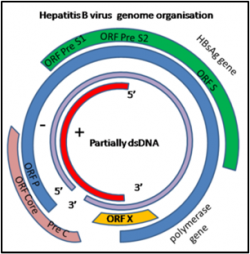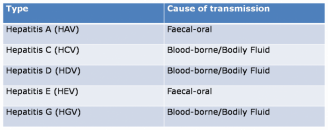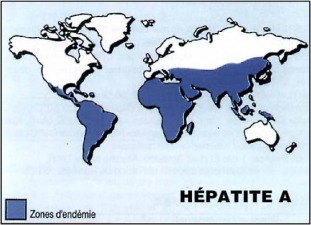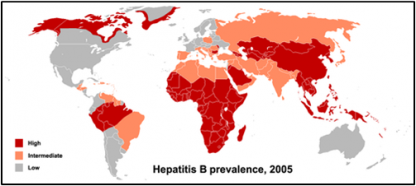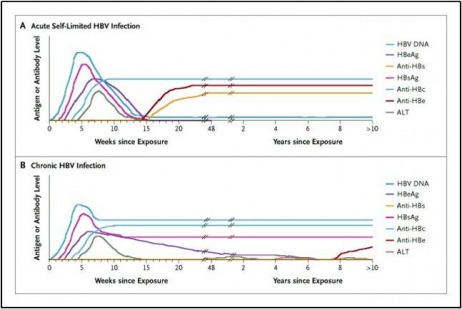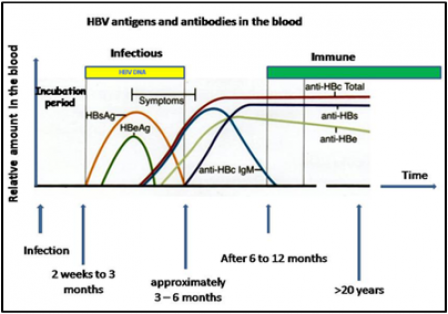Virology
Hepadnaviridae
Features, Structure and Genome
· The hepadna virus belongs to Class 1 under the Baltimore’s system for classification where several kinds of DNA and RNA are classified into seven classes.
· Its circular, partially double-stranded DNA, mainly present in spherical versions and some pleomorphic ones, is enclosed by a lipid envelope and an icosahedral nucleocapsid made of protein. Due to the partial DNA, it is a RNA intermediate. It is also an endogenous DNA which is dependent on DNA polymerase during DNA replication.
· The hepadna virus family also consists of the Human HBV, Duck HBV, Ground Qquirrel HV, Snow Goose Virus, Woodchuck HV and Wooley Monkey Virus.
· Its circular, partially double-stranded DNA, mainly present in spherical versions and some pleomorphic ones, is enclosed by a lipid envelope and an icosahedral nucleocapsid made of protein. Due to the partial DNA, it is a RNA intermediate. It is also an endogenous DNA which is dependent on DNA polymerase during DNA replication.
· The hepadna virus family also consists of the Human HBV, Duck HBV, Ground Qquirrel HV, Snow Goose Virus, Woodchuck HV and Wooley Monkey Virus.
Types of hepatitis virus
There are 5 known hepatitis viruses. A, B, C, D and E. However there are also other viruses such as hepatitis F, G and H and not all of them belong to the hepadnaviridae family. They all infect the liver but cures and vaccination have not surfaced for certain types.
There is vaccination for hepatitis E but none for hepatitis C. Hepatitis C and G belong to the flaviviridae family and are thus RNA and not DNA viruses. Hepatitis D is also an RNA virus and can only propagate in the presence of the Hepatitis B virus. The existence of Hepatitis F has not yet been confirmed and is technically nonexistent. Hepatitis G tends to coexist with the other kinds of hepatitis infections although not known to cause any. Hepatitis H may more or less be the name given to the next hepatitis virus to be isolated.
There is vaccination for hepatitis E but none for hepatitis C. Hepatitis C and G belong to the flaviviridae family and are thus RNA and not DNA viruses. Hepatitis D is also an RNA virus and can only propagate in the presence of the Hepatitis B virus. The existence of Hepatitis F has not yet been confirmed and is technically nonexistent. Hepatitis G tends to coexist with the other kinds of hepatitis infections although not known to cause any. Hepatitis H may more or less be the name given to the next hepatitis virus to be isolated.
HBV Infection
Infection can result from
· sexual intercourse
· non sterile, improper and illegal blood transfusions and transplants
· from mother to baby (transplacenta)
· breast milk feeding.
· It can also occur in occupational exposure to blood. Infection occurs mostly from blood / bodily fluid and sexual contact.
· The table below shows how some of the other viruses are transmitted.
· sexual intercourse
· non sterile, improper and illegal blood transfusions and transplants
· from mother to baby (transplacenta)
· breast milk feeding.
· It can also occur in occupational exposure to blood. Infection occurs mostly from blood / bodily fluid and sexual contact.
· The table below shows how some of the other viruses are transmitted.
Pathogenesis
The hepadna virus causes liver infections in humans and animals and it can be categorised into two catergories: Acute and Chronic liver infection. The type of infection developed depends on the age in which the person is infected.
1. Acute liver infection
· Symptoms are displayed and will change from subclinical to fulminant.
· Symptoms such as loss of appetite, nausea, vomiting, fever, abdominal pain and jaundice will surface.
· About 90-95% of acutely infected patients will recover without suffering a relapse but the remaining 5-10% will become chronically infected.
2. Chronic liver infection
· Develops in 90% of neonates (infants) and 50% of children.
· Symptoms are not outwardly displayed unlike acute liver infection. It is difficult to detect because symptoms and abnormalities do not show up during lab testing.
· This may develop further to cirrhosis and hepatocellular carcinoma (primary liver cancer) while clinical apparent chronic hepatitis will also develop.
1. Acute liver infection
· Symptoms are displayed and will change from subclinical to fulminant.
· Symptoms such as loss of appetite, nausea, vomiting, fever, abdominal pain and jaundice will surface.
· About 90-95% of acutely infected patients will recover without suffering a relapse but the remaining 5-10% will become chronically infected.
2. Chronic liver infection
· Develops in 90% of neonates (infants) and 50% of children.
· Symptoms are not outwardly displayed unlike acute liver infection. It is difficult to detect because symptoms and abnormalities do not show up during lab testing.
· This may develop further to cirrhosis and hepatocellular carcinoma (primary liver cancer) while clinical apparent chronic hepatitis will also develop.
Diagnosis of liver infection
Diagnosis of liver infection is made on the basis of serology which is the identification of antibodies in the blood serum by drawing blood. The presence of Serum Hepatitis B surface antigen (HBsAg) is detected in the blood is often used to determine if there is infection. However, it may not be present in early stages of infection and the detection of IgM antibodies against the hepatitis B core antigen (HBcAg) in the serum is used instead.
Higher rates of viral replication in cells, detection of Hepatitis B e antigen (HBeAg) will surface. HBeAg will then be cleared and anti-HBe will appear shortly due to the reduction in viral replication.
Detection of IgG antigens against the hepatitis surface B antigen (anti-HBs) and core antigen (anti HBc IgG) will indicate that the host has cleared the infection. IgG remains in the memory of the cell and protects it for life.
Higher rates of viral replication in cells, detection of Hepatitis B e antigen (HBeAg) will surface. HBeAg will then be cleared and anti-HBe will appear shortly due to the reduction in viral replication.
Detection of IgG antigens against the hepatitis surface B antigen (anti-HBs) and core antigen (anti HBc IgG) will indicate that the host has cleared the infection. IgG remains in the memory of the cell and protects it for life.
Control
· Donated body parts / blood are tested for HBV before transplants / transfusion.
· Risky sexual behaviours should be minimized or better still, avoided.
· Carrying out vaccination of post 1987 babies against HBV.
· Risky sexual behaviours should be minimized or better still, avoided.
· Carrying out vaccination of post 1987 babies against HBV.
